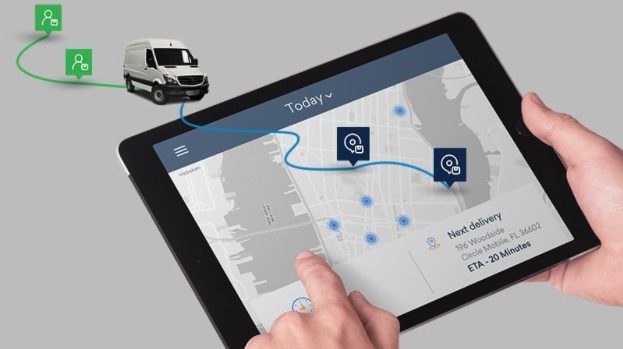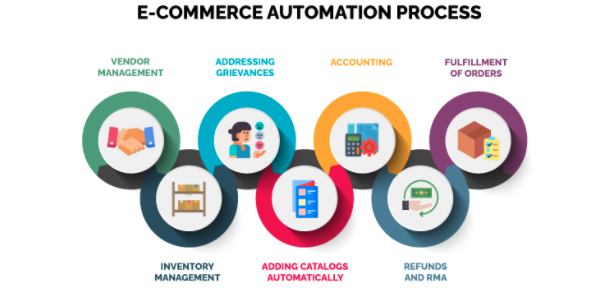By 2030, the autonomous last-mile delivery market is expected to grow to almost 85 billion U.S. dollars from 11.9 billion U.S. dollars in 2021. With the huge demand for same-day delivery, 61% of consumers are willing to pay more for same-day delivery. All the eCommerce platforms need to streamline their operations, specifically, the last-mile delivery operations to be the customer’s preferred eCommerce platform.

And, what drives the last-mile fulfillment? The answer is obvious but significant – A Delivery Management Software. Before we understand what is delivery management software is and its importance, let us first learn about “last-mile fulfillment”. Last-mile delivery refers to product delivery to the final destination (customer’s doorsteps). The last-mile fulfillment refers to the movement of goods from an order fulfillment center to the last-mile (customer doorsteps). The delivery management software plays a vital role in last-mile delivery, eCommerce operations, and customer experience. Thus, any eCommerce business must choose the best delivery management software for a good customer experience.
Must-Have Features For Delivery Management Systems
1. Digital Control Towers
It’s a challenge for an eCommerce logistics team to gain visibility of a multi-party, consumer-driven supply chain network. A delivery management software empowered by DCT empowers all the stakeholders to get real-time visibility of the delivery elements like pick-up problems, route-wise performance, delivery delays, etc. for all orders on a single screen.
2. Machine Learning and AI-based Capabilities
The two most important gifts from a Delivery Management Software’s machine learning/ AI capabilities are predicting delivery times and demand forecasting.
Predicting Delivering Times: Predictive artificial intelligence can be used to both calculate more accurate delivery time estimates for customers and improve the problematic areas of delivery operations.
Demand Forecasting: We all shop from the various eCommerce websites/portals and have already noticed a push notification from the eCommerce online store for the commodities we buy monthly/quarterly. This is nothing but the Machine Learning/ AI working behind the curtains.
According to Gartner’s survey, demand forecasting is the most widely used machine learning application in supply chain planning. The study highlights that 45% of companies are already using the technology and 43% of them are planning to use AI-powered demand forecasting within two years.
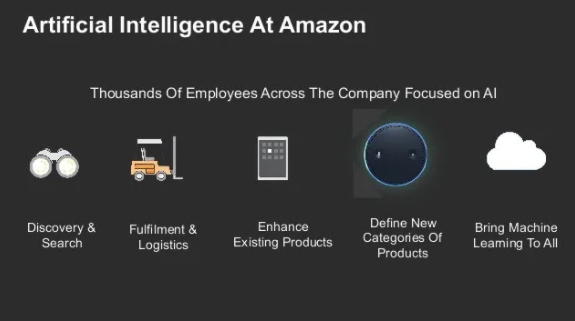
3. Customer Experience Aggregator
Customer Experience is the most important factor for any eCommerce business. Thus, any business solution (including a Delivery Management System) should be capable enough to add value to the customer experience.
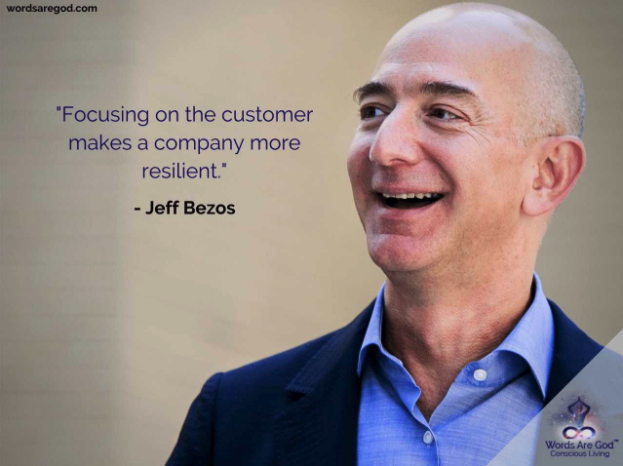
A survey by PwC on last-mile delivery concluded that 80% of consumers value convenience and efficiency above everything else. Every customer shopping on the online platforms needs an accurate date of delivery of his order and wants real-time tracking/updates around his order(s). The Delivery Management System should be capable and convenient enough for the customers to place the order(s), track the delivery, and choose the pricing model.
4. Route Optimization
Route optimization is a crucial part of eCommerce logistics management, as they involve calculating the best routes for delivery drivers, assigning the optimal driver or provider for a specific delivery, and other steps that speed up delivery and increase volume capacity. This is a significant feature due to the unpredictable environmental factors like Traffic on the routes, Customer Availability, Cost Incurred, etc.
5. Smooth Mobile Interface
In 2021, 72.9 percent of all retail e-commerce is expected to be generated via m-commerce, up from 58.9 percent in 2017. Thus, m-commerce plays a significant role in the e-commerce business. The UI of the Delivery Management System has to be mobile user-friendly. Additionally, the mobile-friendly features of the Delivery Management Software should also enable the logistics stakeholders to manage job allocation, routing, delivery sequence and also facilitate real-time communication with customers.
6. Seamless Integration
The delivery management software you choose should integrate with your existing enterprise system without too much complication. Seamless integration is critical because it helps you augment your existing system with any new features that you may wish to include in the long term.
7. Reverse Logistics
By 2025, the reverse logistics market is expected to reach 603.9 billion U.S. dollars. According to UPS, 88% of consumers check the return policy when shopping online while 67% of them review the return policy before completing the purchase. If the return policy is not transparent, unclear, or inadequate, 15% of potential customers will abandon their shopping cart.
Thus, the Delivery Management Software for eCommerce must be as efficient for the reverse logistics (return of the purchased products) as for the new order delivery.
8. Analytical Reports
The eCommerce last-mile fulfillment is crucial but complex. Involving so many logistics stakeholders and unpredictable environmental factors, insightful dashboards, and smart, analytical reporting can be a day saver for everybody.
The analytical reports from delivery management software enable the logistics team to monitor and analyze the last-mile operations efficiently. With the automated analytical reports, all the logistics parameters can be evaluated as effective or not effective. This enables the logistics team to smartly improve logistics management
9. Digital Proof Of Delivery
The last thing an eCommerce company wants to do is a dispute with the customer. However, with such huge order fulfillment daily, errors/confusions are most likely to happen. Thus, the best way to handle customer disputes/product returns/complaints is the Digital Proof of Delivery. Works for both the eCommerce business and the customers.
Key Benefits of Using an Efficient Delivery Management System
The delivery management software market is projected to reach US$ 4,011.8 million by 2028 and is expected to grow at a CAGR of 12.7% during the forecast period of 2020 to 2028. The reason behind the rapid growth of the Delivery Management Software market is the huge value and efficiency it offers in eCommerce supply chain management. Here are some of the key benefits offered by Digital Management Software.
-
Increased Customer Satisfaction & Retention
[blockquote author=”Tony Hsieh, CEO of Zappos”]Customer service shouldn’t just be a department,
it should be the entire company[/blockquote]Customer experience is the most important growth factor in the eCommerce competitive Industry than any other sector. Only a good customer experience would motivate the customers for repeat purchases and spreading positive word of mouth.
An efficient DMS offers the Best UI for Customers to navigate conveniently through the product kitty, choose a payment method, and the product delivery date and timings. Investing in a quality DMS will eventually grow the eCommerce business exponentially.
-
Last-Mile Optimization
The customer expectations/demand for an eCommerce portal is ever increasing. Today, customers expect customized delivery date & time, speedy Delivery of same date delivery, and real-time order tracking. The only wizard that can help an eCommerce portal fulfill its customer’s expectations is a good Delivery Management Software.
A Delivery Management Software creates the best synergy among various logistics stakeholders, creates visibility and real-time tracking, making your last-mile delivery efficiently optimized.
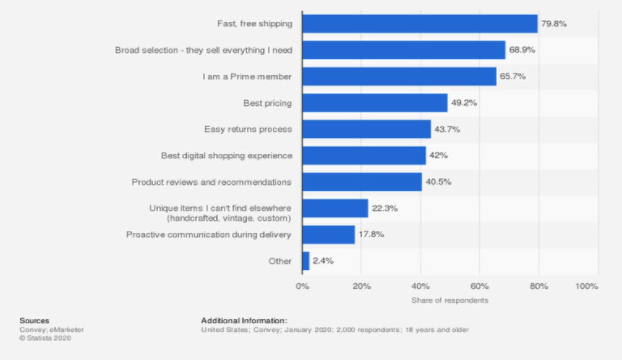
Reasons for internet users in the United States to shop on Amazon as of January 2020 -
Reducing Cost
An efficient Delivery Management System can cut the huge logistics & operational costs of any eCommerce company. Automating various back-office functions to cut the back-office costs, adding the features like route optimization ensures the best route and cuts the fuel costs. Thus, DMS can help cut costs and increase profits.
Gartner’s Prediction: By 2024, organizations will lower operational costs by 30% by combining hyper-automation technologies with redesigned operational processes.
-
Faster Order Delivery
The automation feature not only saves costs but also makes the logistics process fast. The stakeholders are automatically connected through Delivery Management Software and have all the information/data required for speedy delivery.
-
Better Utilization of Resources
This is another merit of getting the logistics operations automated. The logistics stakeholders do not have to get occupied with the redundant tasks (Which are automatically being done by the Delivery Management Software). This makes the stakeholders hyper-automation use their time & energy for the more creative/lucrative tasks/projects.
E-Retail Sales Are Projected to Grow to $5.4 Trillion in 2022. The eCommerce market is growing exponentially. However, the customer expectations/demands and the market competition are growing each day as well. Eventually, the perceptive choice of Digital Technology & Solutions like efficient Delivery Management Software can make any eCommerce business reach its ambitious business goals. Digital solutions have a history and a reputation for being a rescue for the highly unpredictable and constantly changing ecosystem like the eCommerce market.
Concerned about eCommerce Digital Solutions? Here is the help!
